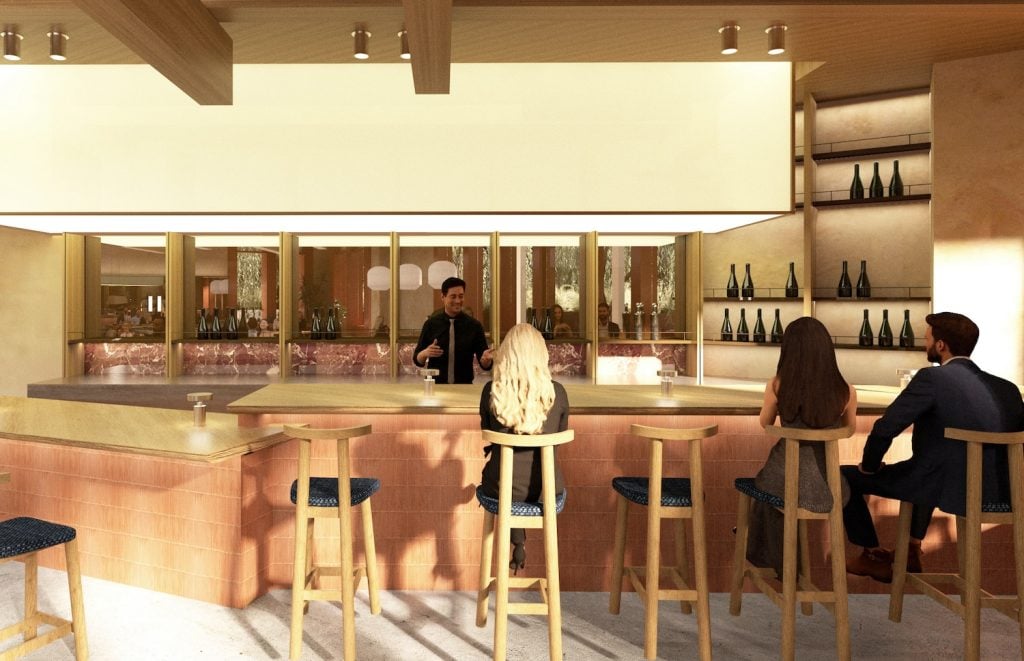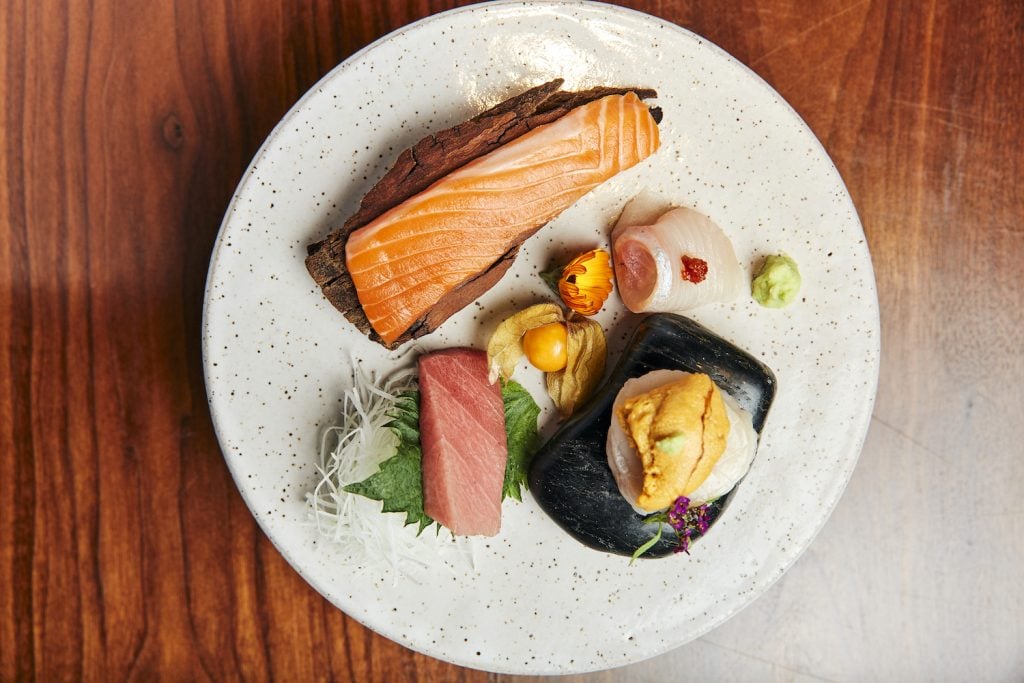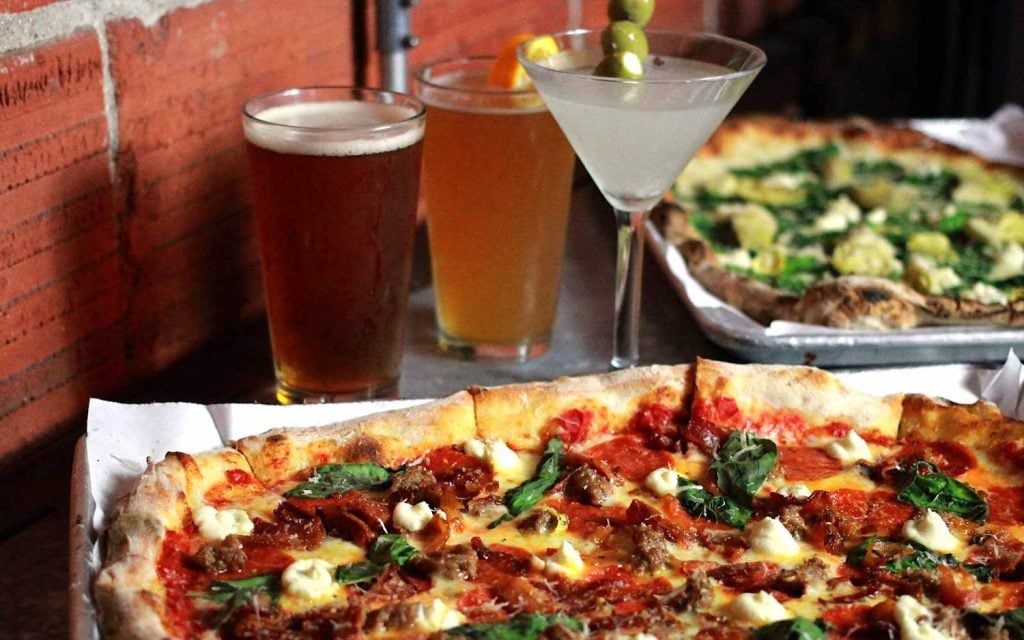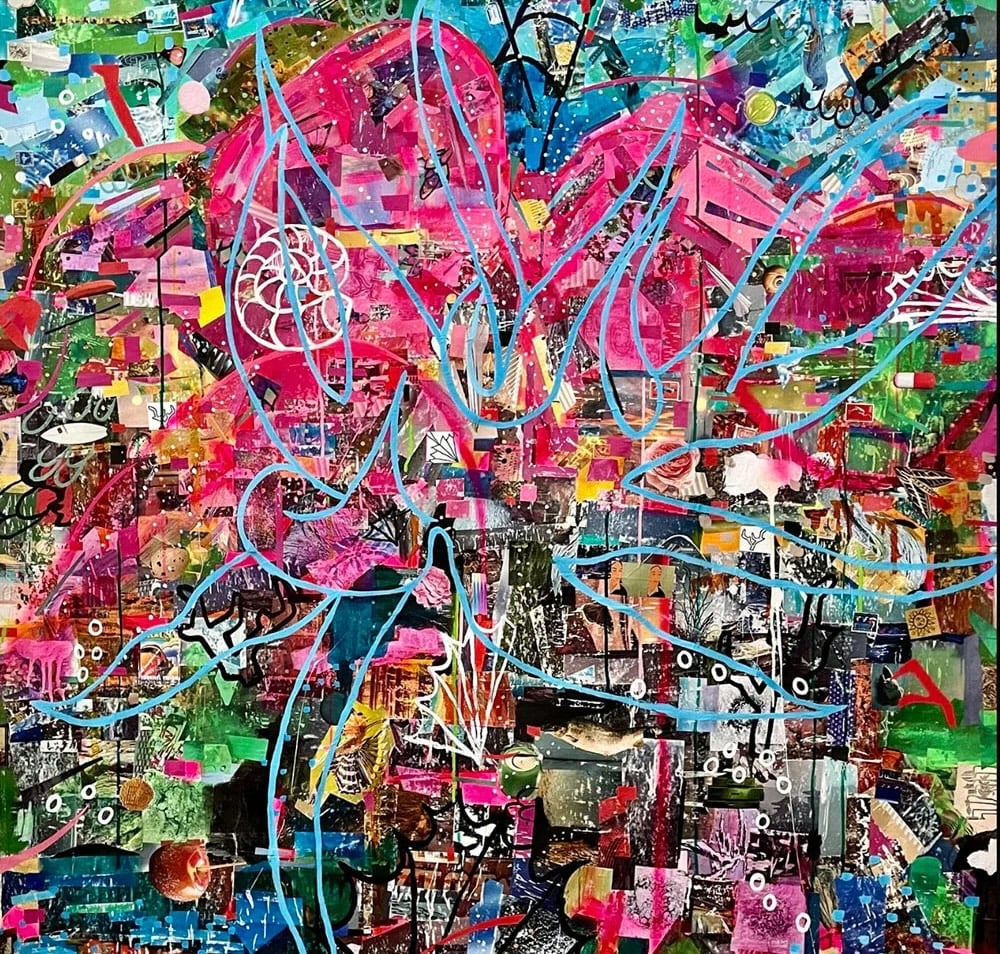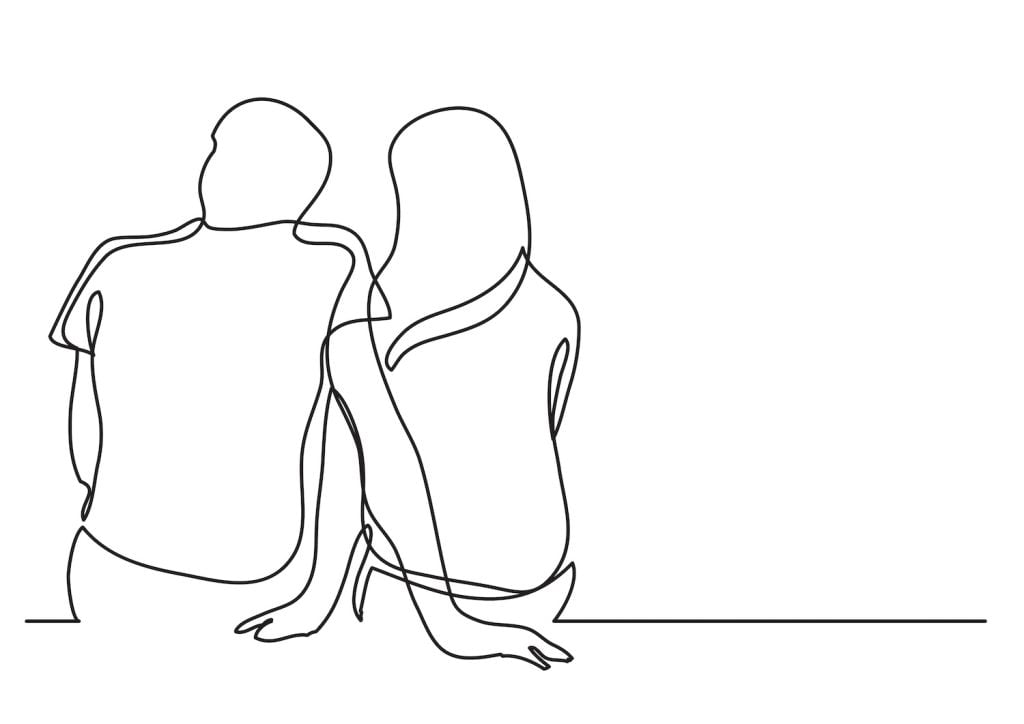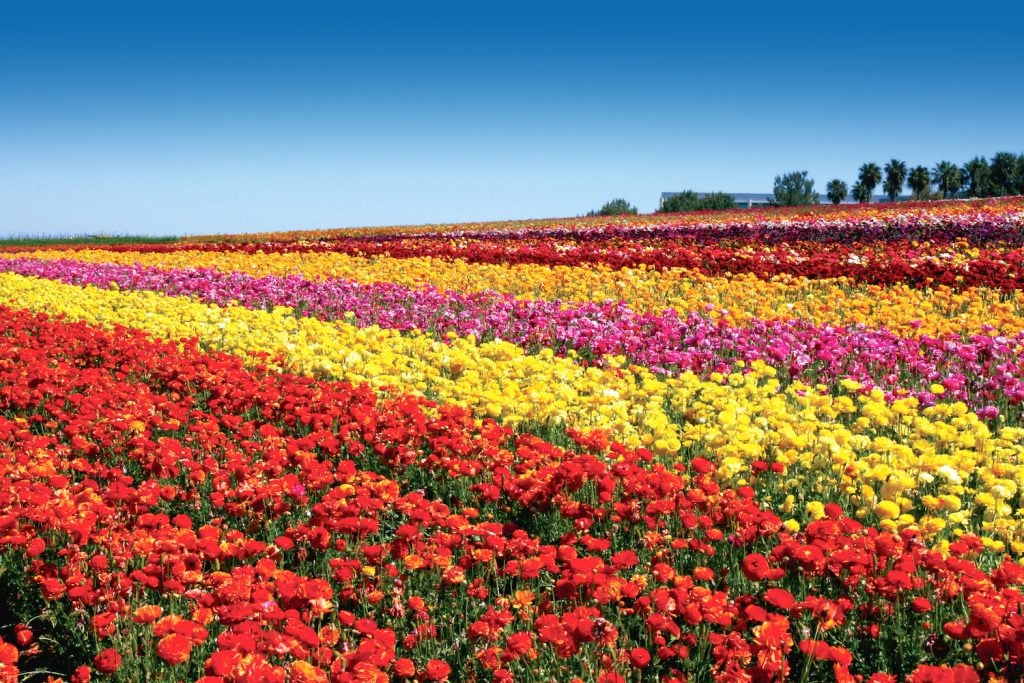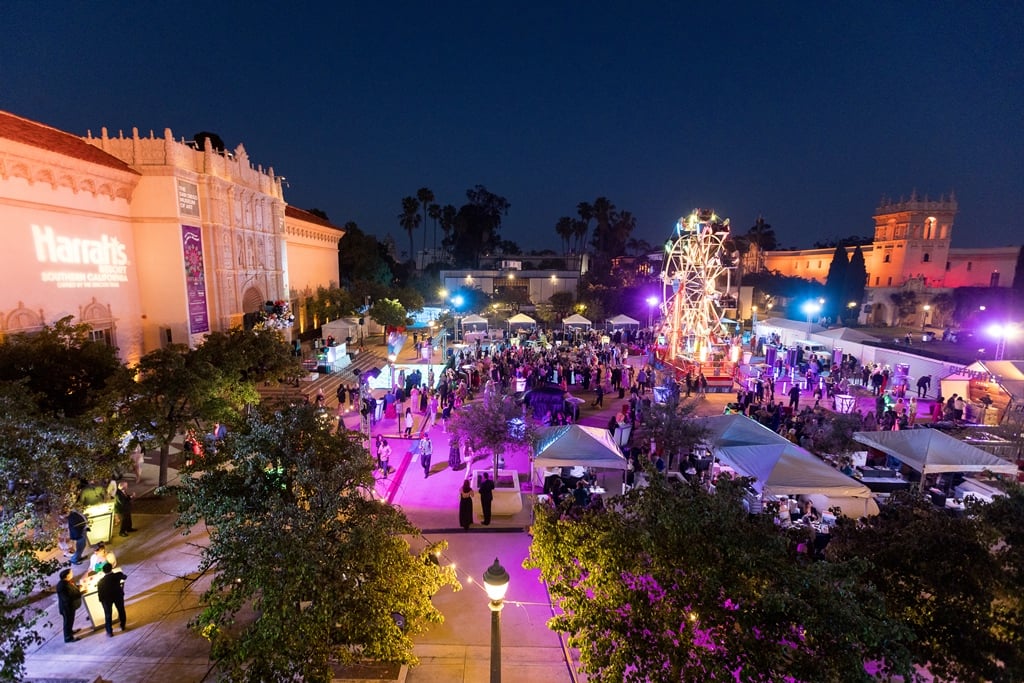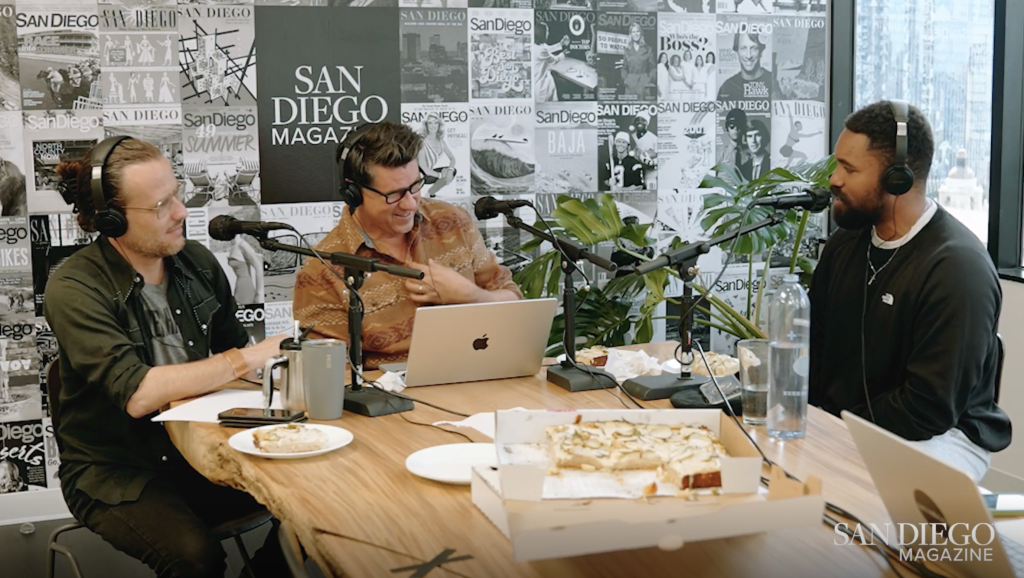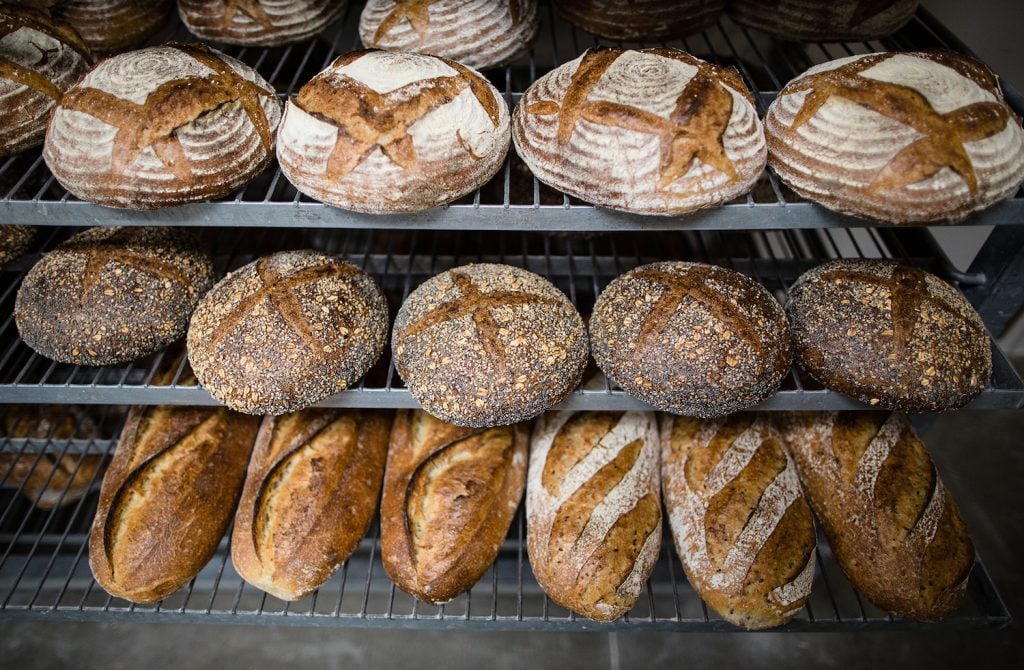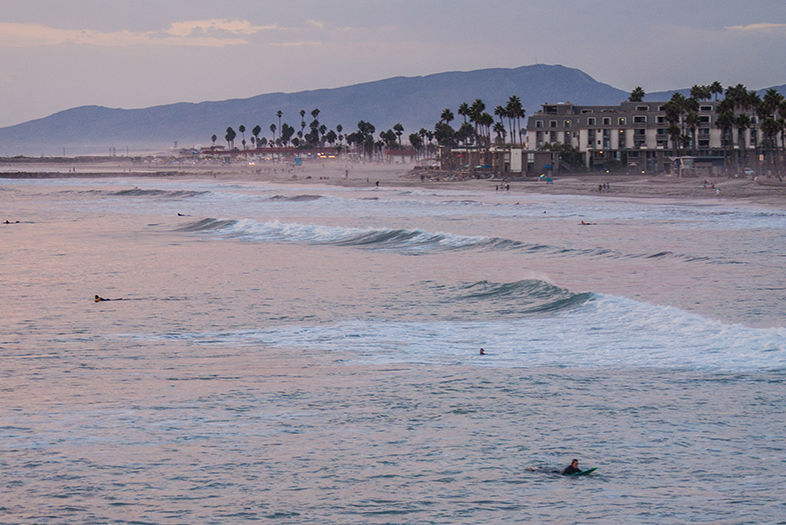San Diego’s beaches are nearly at max capacity. The cost of living near one of them gets higher by the day, meaning most residents have already reached the point where success is to be enjoyed, not fought for. There is nothing inherently wrong with money, nor people who possess lots of it. But there’s a certain hunger and energy to people who haven’t made it yet. They take risks, fly by the seat of their pants, scrape life together, put everything on the line. Whether in art, music, food, drinks, or entrepreneurship, there’s an energy to that hunger that can’t be replicated.

The Oceanside Revolution
San Diego has exactly three beach towns remaining where the hungry can live: Imperial Beach, Ocean Beach, and Oceanside. And now the Oceanside rush is on, because the locals have made it terribly cool.
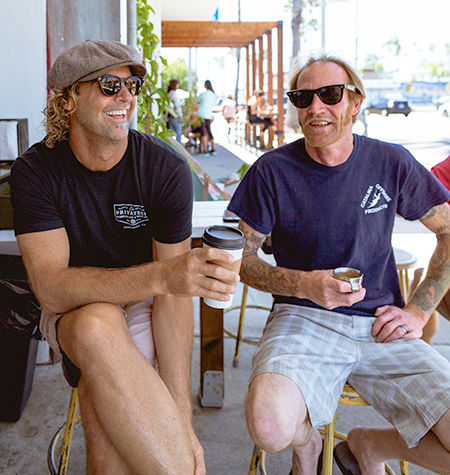
The Oceanside Revolution
Charlie Anderson, owner of Privateer Coal Fire Pizza (left) and Davin Waite (right), chef-owner of Wrench & Rodent and The Whet Noodle
Davin Waite points to a full-grown carrot plant in the ramshackle back patio of Wrench & Rodent, his sushi restaurant in South Oceanside. “That was just a scrap that we threw in the soil,” he says. “We’ll take scraps, throw them in the corner, and see what grows.” Next to a grill where they smoke eel, there are plants of all kinds—tomatoes, butternut squash, carrots, peppers, kaffir limes, herbs, chocolate mint, passionfruit.
Local fisherman Shawn Aulby of Oceanside Whole Fish pulls his truck up to the restaurant. Inside a cooler, he unveils last night’s catch: three vibrant yellowtail, destined to become tonight’s sushi.
Even Grammy-winning musician Jason Mraz has gotten into the local food scene. He recently held the O’Side Feast at his own Mraz Family Farms with local chefs, growers, and makers. It was a collaboration with the city, which is investing money to promote the area’s agritourism. As he put it: “Oceanside’s the new Brooklyn of San Diego.”
Once marginalized as an isolated military town of strip clubs and gang problems, Oceanside’s food, art, and local business scene have reached the destination stage. Now mixed-use retail spots are springing up, tourist maps are circulating, and South O “walkabouts” are heading out on the second Wednesday of each month. A crane looms near the landmark pier like a sculpture called Progress.
“I’m born and raised here for 42 years,” says Aulby. “It’s changed drastically. It’s a good thing. As a local, I like the old, shady Oceanside. But you can’t stop change. It’s rad that these restaurants are here for us. They’d rather give their money to me or a local farmer like Luke Girling of Cyclops Farms and keep it in the community.”
There are two Oceansides: the more tourist-oriented downtown, and the local haven of South O. Both have their charms. When the city allocated redevelopment money years ago, most of it went into downtown. So South O business owners—like Roddy and Aaron Browning of Flying Pig, which most people credit as the bistro that started the city’s little revolution—grabbed some bootstraps and built themselves.
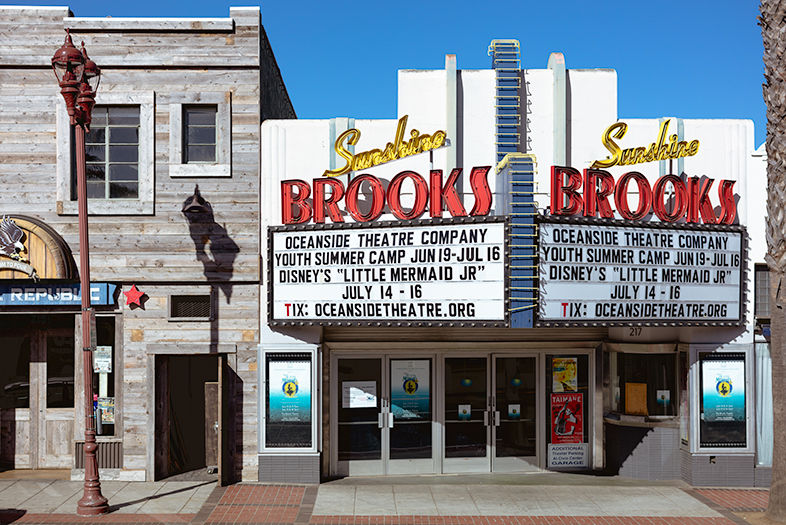
The Oceanside Revolution
Sunshine Brooks Theater on North Coast Highway
Waite introduces me to Charlie Anderson, a native many refer to as “the mayor of South O.” He credits TransWorld, a surfing and skating lifestyle media company founded in Oceanside, as a big reason for the city’s creative boom. “They brought all these creative people to the area who had access and connections who started their own businesses,” he says. “I started Privateer [Coal Fire Pizza] while working there. Our former receptionist at TransWorld started Nixon watches. Brixton apparel was started by a TransWorld employee; [sports commentator] Sal Masekela worked there.”
Waite, a 37-year-old sushi chef, is a living metaphor for his hometown. He spent the first half of his life as the kid moms warn their children to avoid—drugs, drinking, danger. Then he cleaned up and became an attraction.
With an old Oceanside punk band, The Hillstreet Stranglers, on his radio, Waite drives me to some of his favorite places. We start downtown at Petite Madeline, a bakery owned by local Christine Loyola. Their all-day buns and ham sandwiches (Gruyère cheese, béchamel sauce, and roasted ham) pull a steady stream of locals in for breakfast and lunch.
Before we enter, Waite pauses and looks around downtown. “As a kid, my dad would drive our Pinto up here and say, ‘Kids, if you hear a loud noise I need you to duck.’ And when it happened, he’d reach back with both hands and lock both of the doors. And you know what, most of the time we had to duck. There were still hookers on the street. It was the place where kids go away with Pinocchio and turn into donkeys.”
Seediness is crucial to Oceanside’s charm. Too much pristine development, and soul will be shed, if not lost. There’s a reason the TNT crime drama Animal Kingdom is filming here. The city still feels rough, gritty, real. No one in Oceanside cares much about celebrities, Waite says. Yes, so-and-so lives here. Locals care about the skaters, surfers, hot rodders, bikers, enlistees, farmers, fishermen, muralists, graffiti artists, natives, neighbors, people.
Waite points to a sex shop with excitement. “Every town needs a good sex shop,” he says. “And I think it’s great that we have a sex shop right next to the tourist attraction of the surf museum. And we still have a strip club.” As we get out to walk the streets, the sidewalks aren’t Del Mar clean. But we pass moms in yoga pants with their kids in strollers. Clean enough. Buildings are wrapped in bright murals by artists like Kris Markovich. The police no longer consider the murals graffiti; they’ve let street art flourish.
The harsh realities of old Oceanside still occasionally sting. In June, a man was murdered in Junior Seau Amphitheatre on the night of the farmers’ market. But Waite credits the city, and police, for fostering the right kind of progress. “The OPD has solved almost every homicide that’s happened in the last couple of years,” he says. “It’s not a sterile environment; the homicides are still happening, but it’s been a long time since I didn’t feel safe.”
We stop by Real Surf Shop and meet owner Shawn Ambrose. I tell him I’m doing a story on—”The gentrification of Oceanside,” he says, finishing my sentence. Yes, well, the growth.
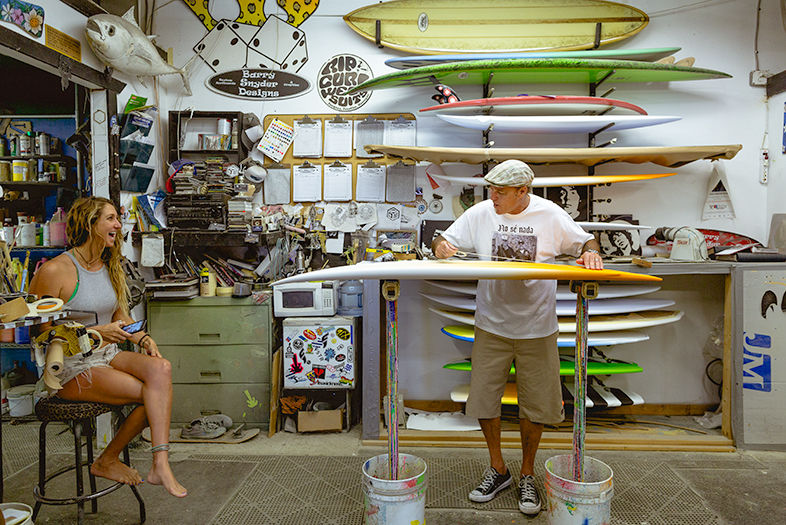
The Oceanside Revolution
Endless Sessions, which specializes in custom boards
“Here’s the thing,” Ambrose explains. “We don’t want to become Huntington Beach. Unfortunately, the town council uses that as a goal, kind of. You can’t stop progress, but you can control it. I’d rather be closer to OB or Leucadia.”
You’ll hear almost this exact line from all the local business owners: progress is inevitable; we’d rather be a part of it. “If you talk to everyone, we’re all going to say the same thing,” explains Waite, smirking as he adds, “and if we have to bear arms to accomplish our agenda…”
Part of what’s kept Oceanside so “real” is the same reason OB became a hotbed for counter-culture: geographic isolation. Interstate 8 wasn’t built until 1972, so ’60s activists had a relatively removed place to live their nontraditional, creative lives. And Planet Oceanside is 35 miles from downtown San Diego, with the gridlock of the 5/805 merge between them. On the north end, Marine Corps Base Camp Pendleton separates it from Orange County by 16 miles.
“Mayor Anderson” has expanded Privateer next door with a market of local goods. He serves baked treats from Madeline, plus some desserts from a local gal who’s baking while working a day job at Brixton. His son works at Privateer. They had the same third-grade teacher at the nearby elementary school.
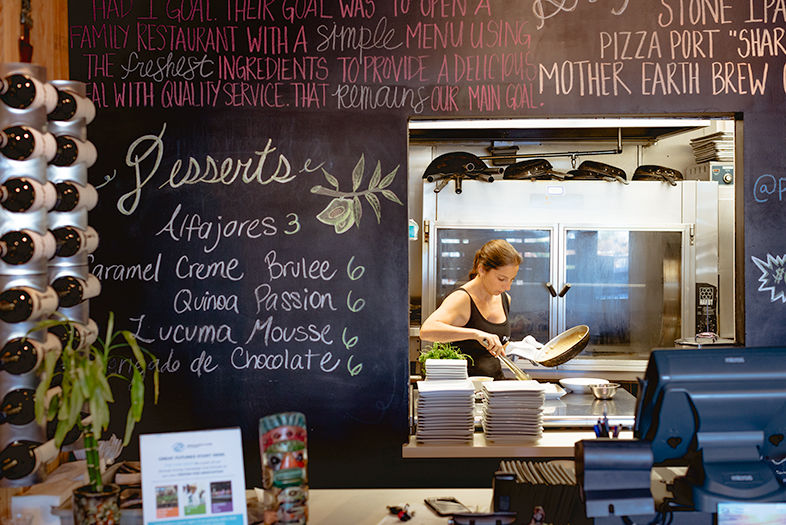
The Oceanside Revolution
Chef-owner Iole Revilla cooks at Panca Peruvian Cuisine & Rotisserie
The fact that Waite has taken me to see Privateer is indicative of Oceanside’s community, especially South O. Locals help each other. Outsiders who don’t get it get snubbed. As a surfer, I suggest to Anderson that it’s similar to “aggressive localism” in the water. I apologize, feeling that might be too harsh.
“You can say ‘aggressive localism,’” he agrees. “I feel we’re really welcoming and accommodating, open arms to everyone. But if you’re going to be a jerk and disrespect us, then the elbows go up. Because we’ve been ostracized our entire lives as ‘Oceanslimes.’ Dirtbags. And here are these dirtbags now making cool stuff. We don’t take that for granted.”
They want people investing in the community. People who help each other. If you set up a pizza place next to a local who’s already selling pizza, your time in Oceanside will not be pleasant, and possibly short.
On an empty lot in suburban Fire Mountain (“the Beverly Hills of Oceanside,” says Waite), Luke Girling walks us through Cyclops Farms. This is a place where a multimillion-dollar estate could’ve been built. Instead, there are rows of squash, watermelons, peppers, tomatoes, and strawberries. On Saturdays, there’s a line for his farm stand. The rest of the week, he supplies Oceanside chefs like Waite and Willy Eick, a former George’s at the Cove cook who partnered in the bistro 608. Farm-to-table distance: about eight blocks.
Back downtown, we drive by the Top Gun house, where Tom Cruise and Kelly McGillis did their thing. It’s abandoned, a little sad. But the fence suggests someone has plans for that prime real estate. The weekly Thursday farmers’ market is jam-packed, and will reconvene closer to the water and a little rowdier near sunset.
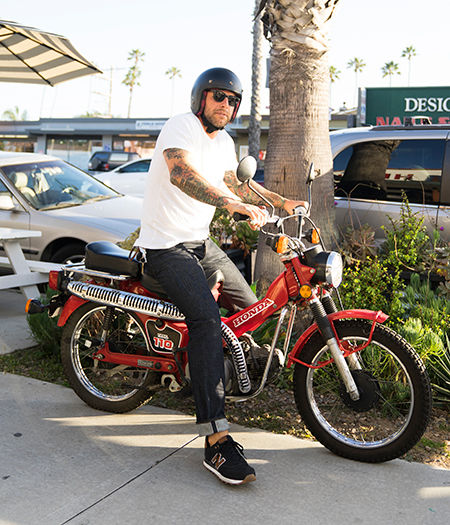
The Oceanside Revolution
A shopper cruises the neighborhood during the South O Walkabout
Having grown up in San Diego, I remember Oceanside as San Diego’s gangland, whether the Posole Locos, Deep Valley Bloods and Crips, Samoan gangs, black gangs, Mexican gangs, white Aryan gangs. It has the best summer surf in San Diego, so we would come despite all that, and drive by all sorts of boarded-up businesses. It was a surf ghost town. Shady people in the sun.
Now those empty storefronts are filling. Families walk the streets next to the homeless, the haggard, and the willfully unkempt. They’ve started calling the Coaster commuter train “the Oceanside Express.” People from central San Diego will take the train up, go to dinner, grab a drink at Local Tap House, and then Uber back home. And at the center of all the renewed interest and action are longtime locals like Waite and Anderson, showing respectful outsiders around with a wary, vigilant eye on the growth.
More: 18 Places You Need to Visit in Oceanside
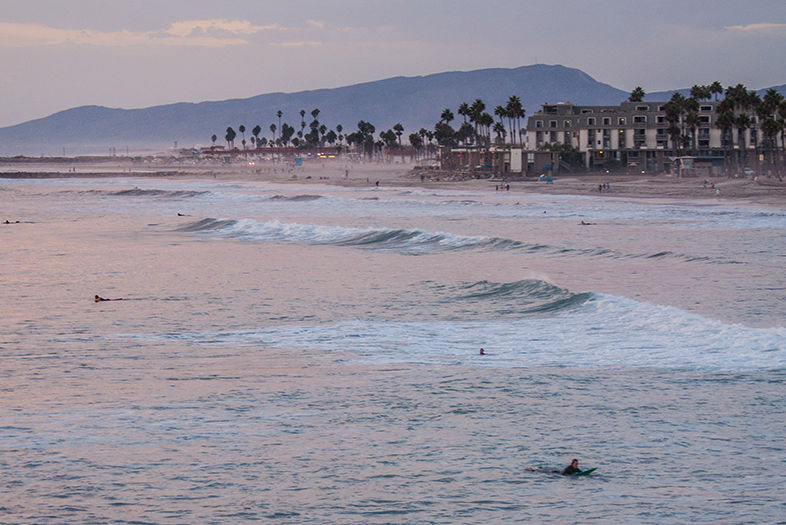
The Oceanside Revolution
Photo by Julie Simha Pinto
